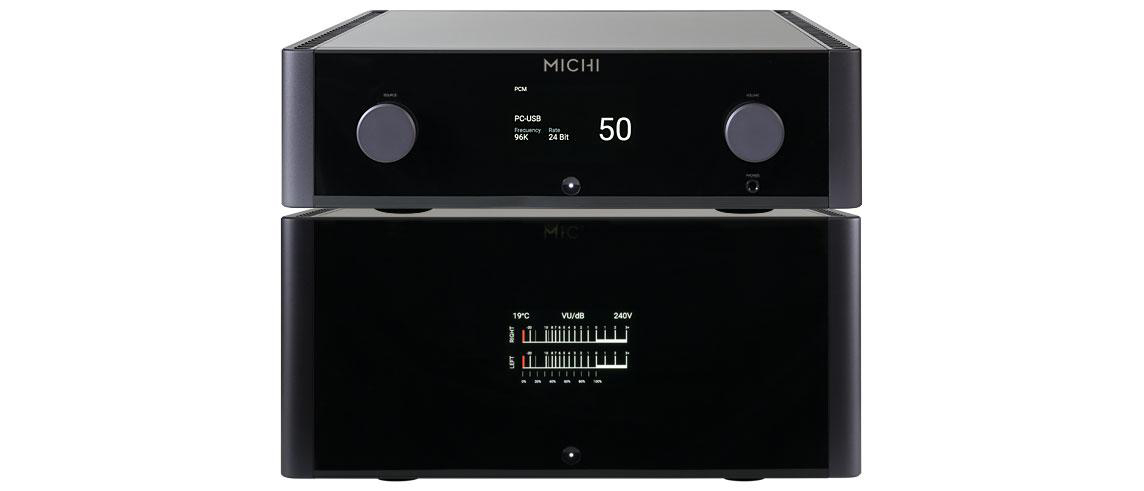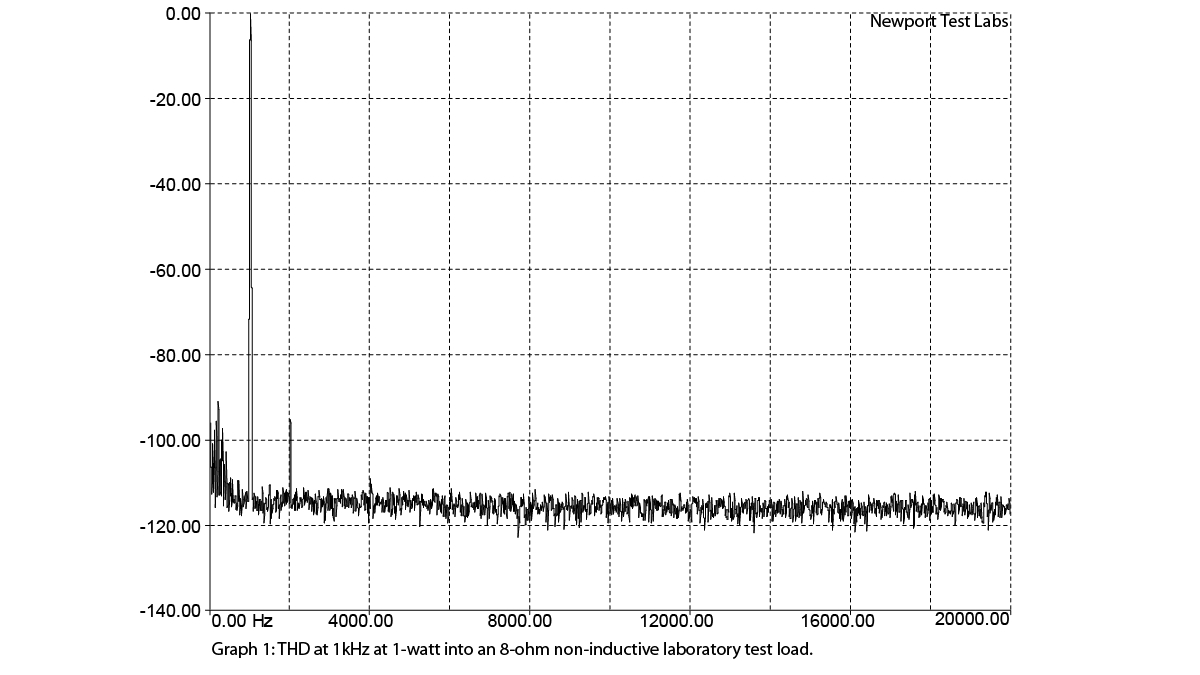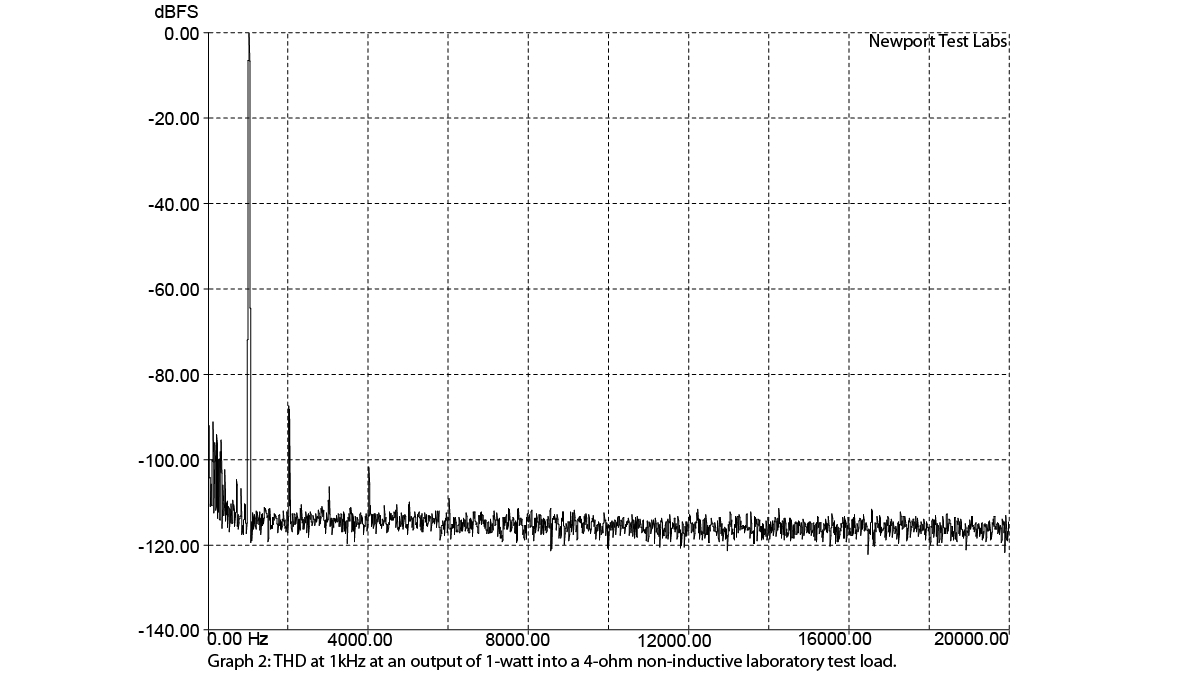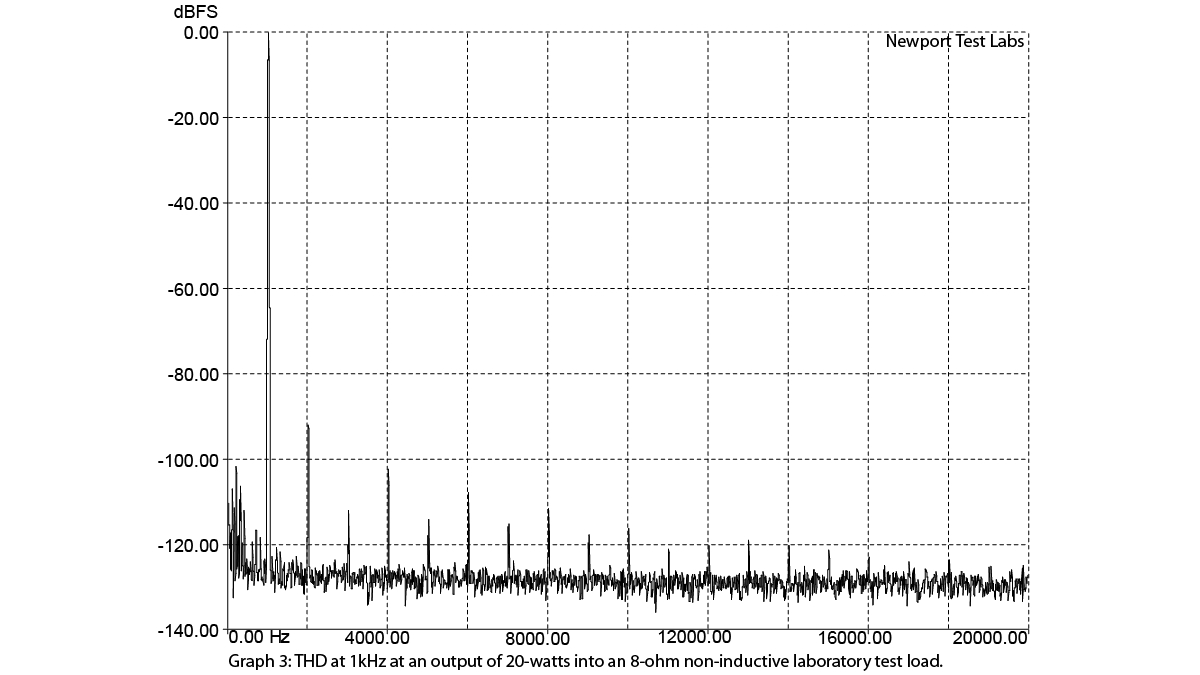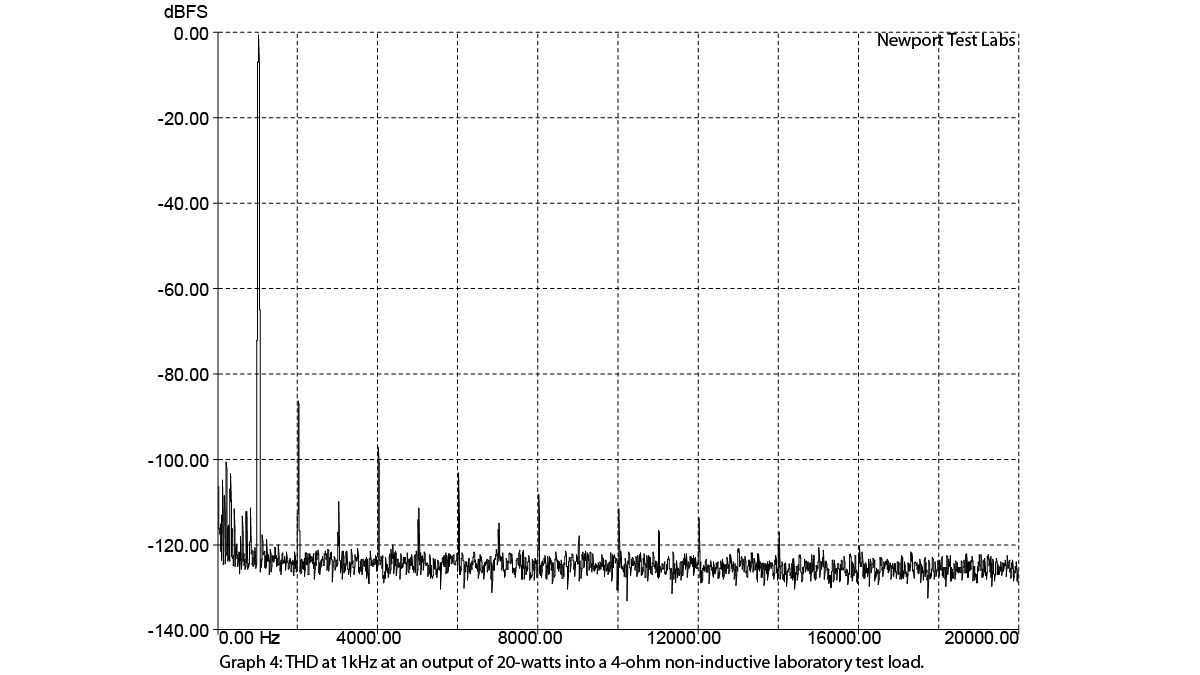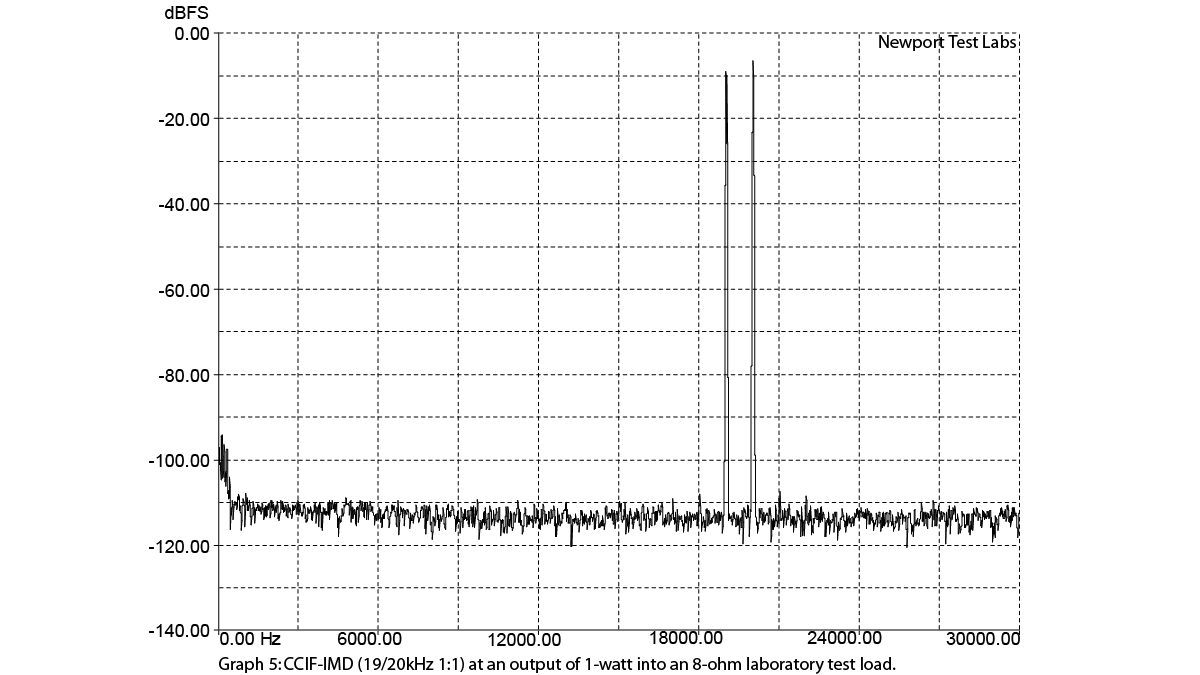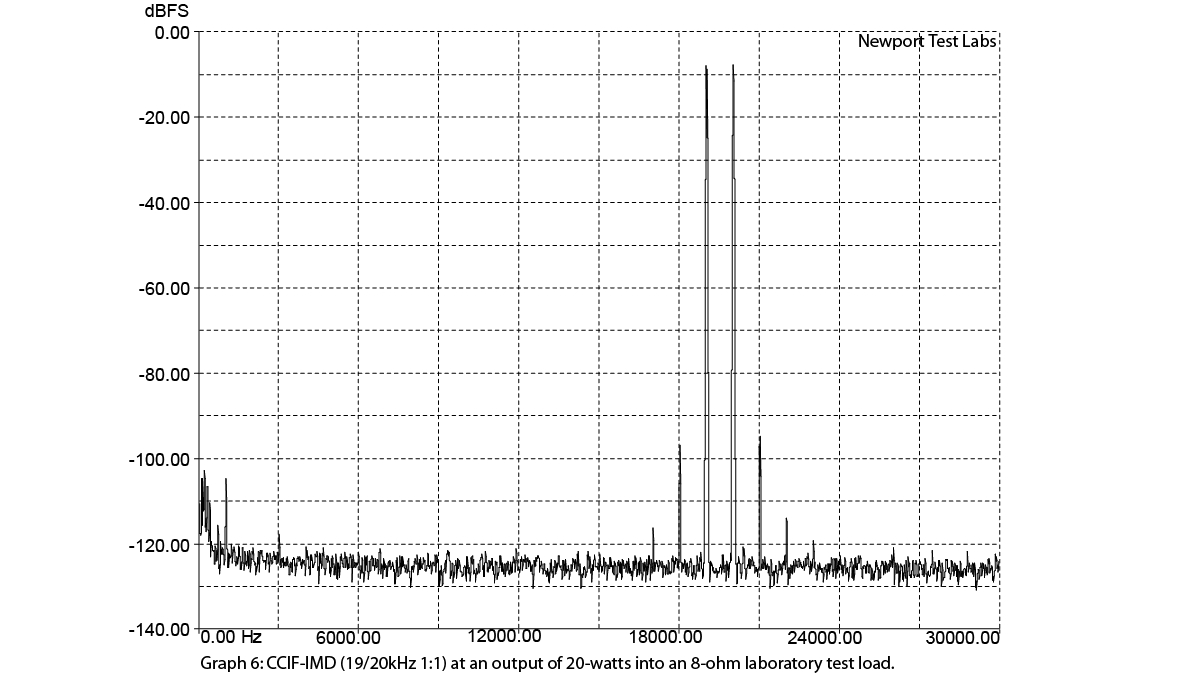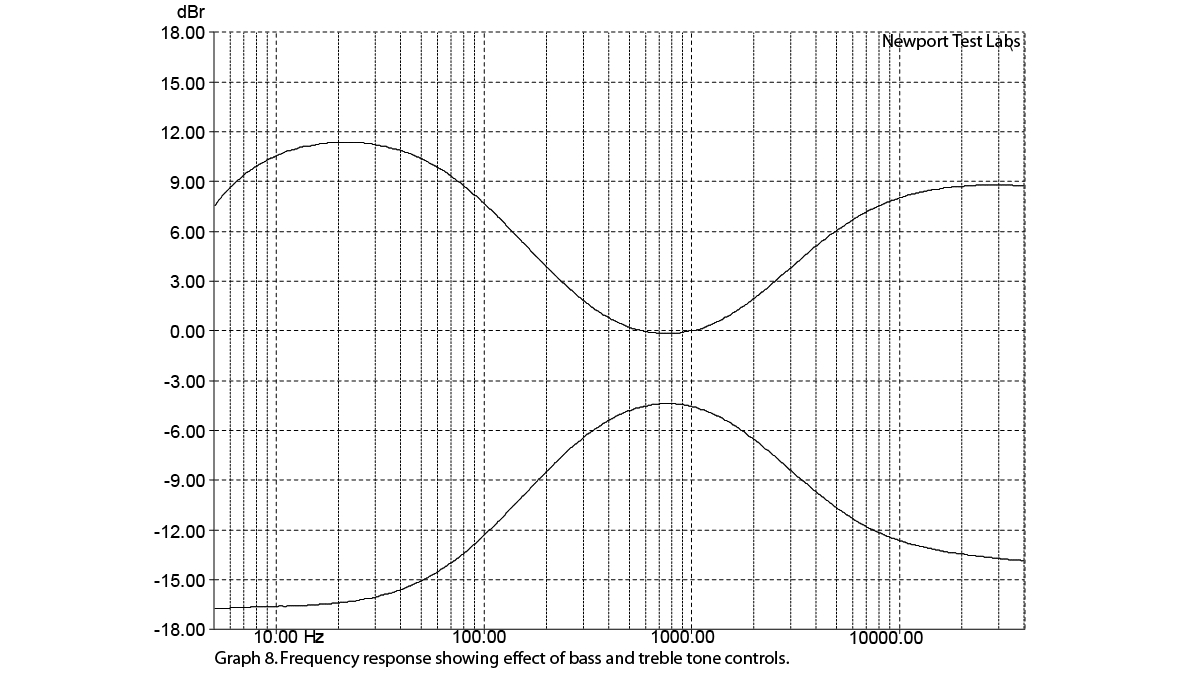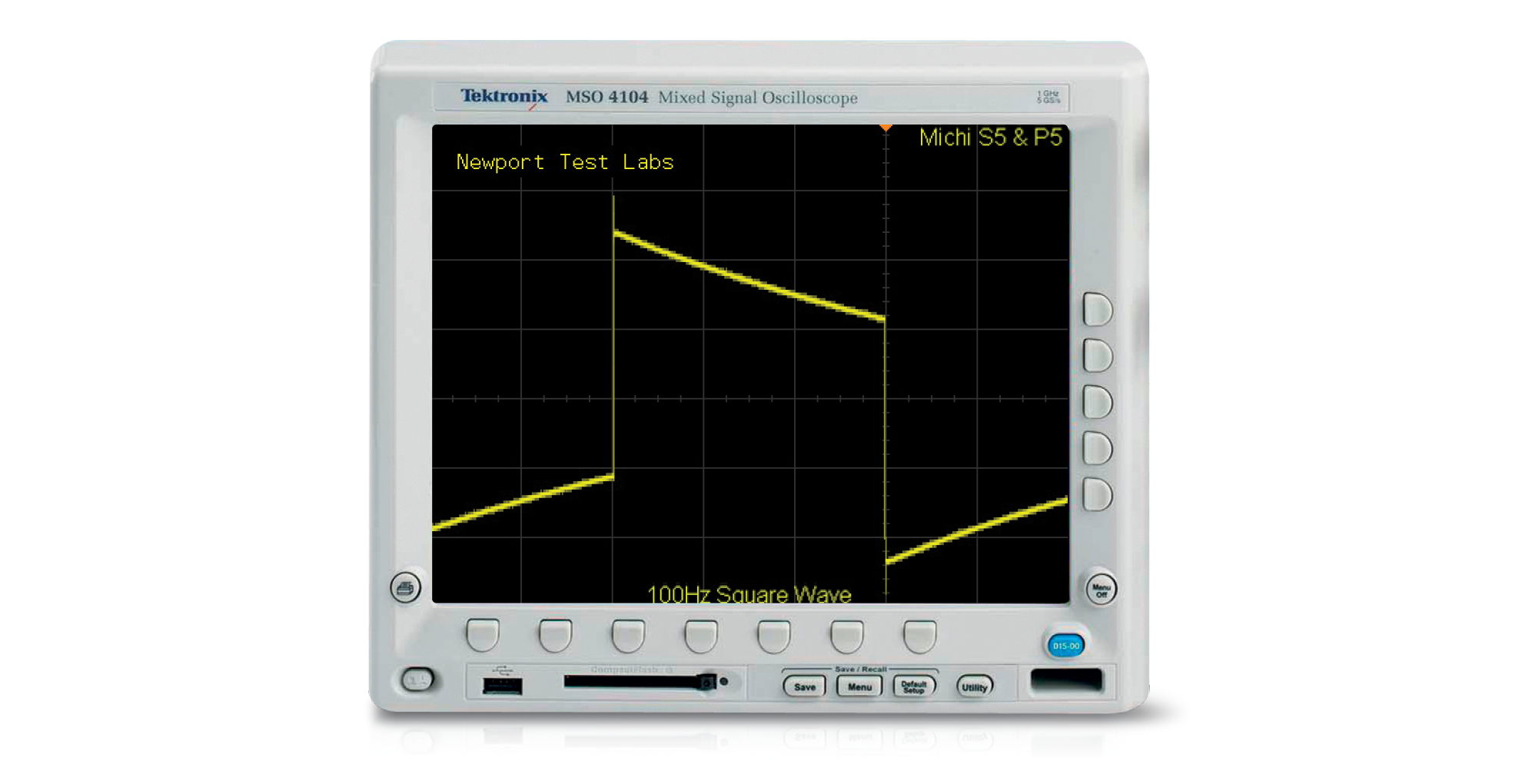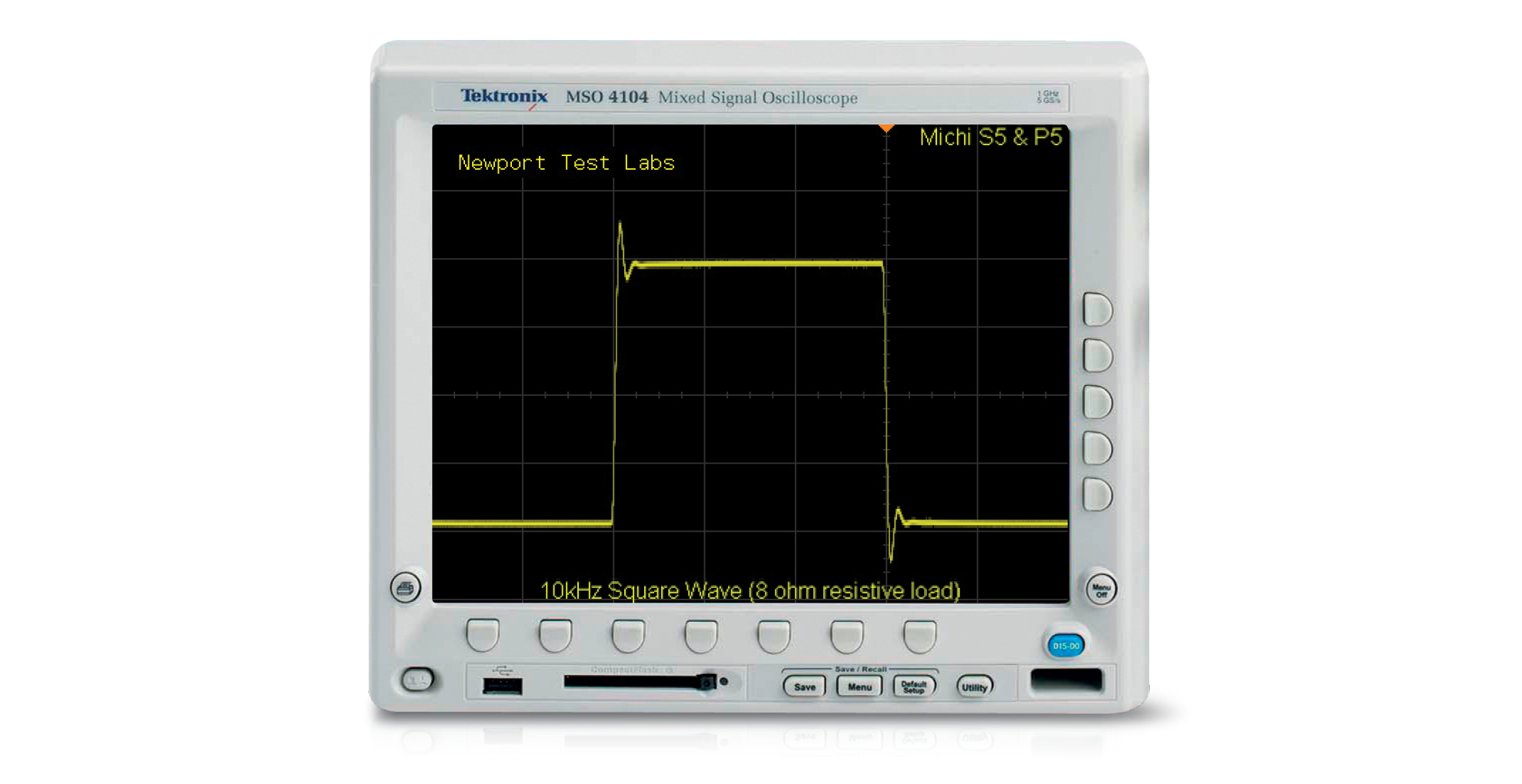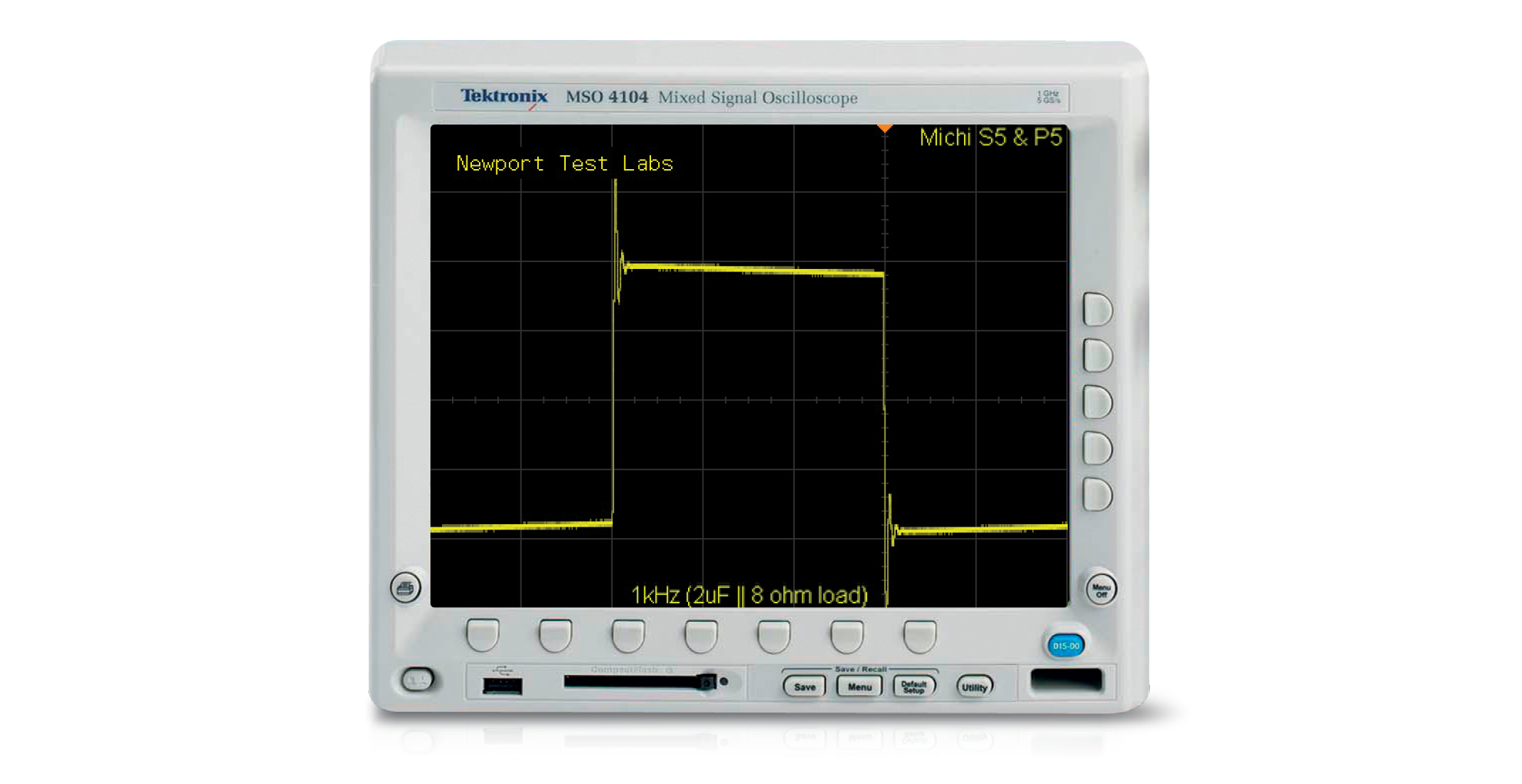What Hi-Fi? Verdict
With the superb construction, elegant design and perfectly natural sound of the Michi P5 and S5 combo from Rotel, the only question left to ask is 'how much?' The pair offer awesomely low noise with huge output and do so in a gorgeous package.
Pros
- +
Superb sound
- +
Prestige appearance
- +
Great built-in DAC
Cons
- -
No AES/EBU input
- -
Cross-talk between each unit's remote
- -
Incredibly heavy and bulky
Why you can trust What Hi-Fi?

This review and test originally appeared in Australian Hi-Fi magazine, one of What Hi-Fi?’s sister titles from Down Under. Click here for more information about Australian Hi-Fi, including links to buy individual digital editions and details on how to subscribe.
Rotel Michi S5 tested at £3299 (AU$5999). Rotel Michi P5 tested at £5399 (AU$10,399).
Can a famous brand be a victim of its own success? Ask any professional marketing person that question and their answer will be a resounding “Yes!” Take, for example, one of the world’s most famous motor vehicle manufacturers, Toyota.
Toyota is not only one of the most famous car companies in the world, it also sells more passenger vehicles than any other car manufacturer. But when it first tried to enter the luxury vehicle market to compete against the likes of Rolls Royce, Mercedes Benz and Daimler, with its fabulous – and famous – Century model, it could not gain any traction on the world market.
No-one wanted to buy one, despite its technical superiority and the provision of luxury fittings no other vehicle had, such as reclining rear seats with built-in massage systems, and doors that opened and closed electronically at the touch of a button. Still in production, the Toyota Century is the vehicle that is used to transport both the Japanese Emperor Naruhito and the former Prime Minister of Japan, Shinzō Abe.
It wasn’t the money that stopped those who could afford it from buying a Toyota Century (the current model will set you back more than AU$250,000), it was the badge on the bonnet. Because anyone could own a Toyota, it seems that the rich didn’t want to be seen in one. Motoring enthusiasts didn’t want to be seen in one either. Imagine if, when asked what type of exotic vehicle they drove, they had to answer “a Toyota”.
So what did Toyota do? It started building luxury vehicles that didn’t have the Toyota badge on them, but another one. That name?
You know it already: Lexus. And they sold like hot cakes (and still do), because, quite frankly, not everyone can own a Lexus.
The latest hi-fi, home cinema and tech news, reviews, buying advice and deals, direct to your inbox.
Which brings us to Rotel.
At the start of the hi-fi era, in the 70s, Rotel was by far and away the best-selling hi-fi component manufacturer in Japan and, indeed, in all probability the best-selling hi-fi brand right around the world, with a well-deserved reputation for delivering top quality at reasonable prices.
However, as more and more manufacturers entered its particular niche in the hi-fi market, Rotel’s market share diminished, so that in the early 90s, the company decided to start building high-powered, high-performance ‘luxury’ models to compete against the likes of Luxman and Accuphase in its home market, and against the likes of McIntosh and Audio Research on the world stage.
The models it built were undeniably fabulous and were certainly completely different visually from all other Rotel products, exemplified by the appearance of the RHC-10 preamplifier and RHB-10 dual mono power amplifier, to name but two. The company also learned from Toyota’s marketing faux pas and branded the models ‘Michi’, which is often translated from the Japanese as meaning ‘Righteous Way’. But instead of leaving it at that, it marketed the brand as ‘Michi by Rotel’. You can guess the rest.
This time around, twenty years into a new century, the Michi brand name is just ‘Michi’, the marketing is for ‘Michi’ and the brand writ large on the front panels is also just ‘Michi’. It’s only if you look around the back that you’ll find small lettering that says ‘By Rotel’. “Michi is taking Rotel’s values of excellent performance and value into the high-end segment with models that offer new levels of engineering, build and design while setting new reference standards for audio performance,” says managing director Peter Kao. “We have used all of our 55 years of design and manufacturing experience to create our best-ever products.”
Michi S5 preamplifier
The front panel of the Michi S5 Control Preamplifier’s austere exterior, with its black glass plate and two large rotary controls gives absolutely no clue as to the complexity of what’s inside it… at least it doesn’t until you switch it on and its brilliant full-colour OLED panel springs into life.
Then, if you spin the left-most control to see what sources might be on offer, you’ll discover that the P5 has no fewer than six line level inputs, four of which are unbalanced (via RCA inputs) and two of which are balanced (via XLR) plus a single phono input which you can switch between being most suitable for either moving-coil or moving-magnet cartridges.
On the digital side, you get six SPDIF inputs, three optical and three coaxial, as well as USB and Bluetooth. Curiously, there is no AES/EBU input.
The Michi S5’s extensive menu system allows owners sophisticated customisation options for all inputs, so you can switch off the ones you’re not using so they don’t appear when you’re scrolling through inputs, rename any or all of the inputs to more accurately reflect whatever component you have connected to them, plus you can use the Michi’s bass and treble controls to make specific tonal modifications attach to the specific input you’re using.
You can also fix a specific volume level to each input that will override any other volume setting and cannot itself by changed using the front panel volume control or the infra-red remote control’s up/down buttons. Michi says of this feature: “This is useful for input sources that include their own volume setting like common Apps on phones or tablets.”
Look around the rear of the amplifier and you’ll find some additional digital connections, but the network port is only for firmware updates and control over IP, and that USB-A socket is only there to power external devices. It has no digital signal capability. The RS232 connector is there, of course, to facilitate custom installation integration.
Also on the rear panel are six pairs of stereo line outputs, labelled ‘Line Out’, ‘Mono Sub Out’, ‘Pre Out1’ and ‘Pre Out2’, ‘Balanced Out1’ and ‘Balanced Out2’. The ‘left’ and ‘right’ subwoofer outputs are not stereo: as the labelling suggests, each one outputs a summed signal derived from both channels. You also get two digital outputs, one coaxial and the other optical.
The USB input supports 16-bit and 24-bit PCM from 44.1kHz up to 384kHz as well as DSD64 and DSD128, but to do this via a PC, you’ll have to load a Windows Driver, which Michi helpfully supplies on a USB stick. Mac users, of course, don’t need a driver: their computers will just work properly with the Michi. The SPDIF inputs support 16/24 PCM up to 192kHz. Digital decoding is accomplished using an AKM4490EQ 32-bit/768 kHz dual DAC, one of the best of the currently available devices.
Whereas Rotel equipment was once manufactured in Japan, like the great majority of Japanese hi-fi manufacturers (and many other hi-fi manufacturers around the world), it is now manufactured in China, and the same is true for components bearing the Michi name. However, Rotel retains a point of difference from most manufacturers because it owns its own factory in Zhuhai in China, which it established in 2005. Rotel says that although Michi components are manufactured at that same facility, they are made in a separate section of one of the factories.

Michi P5 power amplifier
Me saying earlier on that the front panel of the Michi S5 was austere doesn’t leave me much to say about the Michi P5 stereo power amplifier’s front panel because, as you can see for yourself, it’s even more umm… austere.
There’s just a single button at the bottom centre of its front panel, which is actually a standby power switch, since the main power switch is on the rear panel. Since power amplifiers consume a lot of power even when they’re not being used, and particularly so in the case of the Michi P5, which is rated with a power output of 500-watts per channel into 8Ω, you can choose to have the Michi P5 switch itself off automatically after a no-signal period of 20 minutes, 1, hour, 2 hours, 5 hours or 10 hours. Alternatively, you can disable the automatic power-down circuit completely so it never switches off.
As with the S5, the P5 has a very bright OLED display whose primary feature is its ability to act as a spectrum analyser, showing the spectrum of the music being played in your choice of 8, 12 or 16 bands, or you can choose to have the display act as a VU meter, for which there are four different options (VU/x2/x4/x8). For either setting you can choose between four different brightness levels, or you can choose to switch the display off entirely.
The display also shows the input voltage at the top right of the display and the temperature of the heatsinks at the top left. The voltage shown on the display (240V) didn’t actually reflect the mains voltage in my home at the time, which was 244V, so it might just show the intended operating voltage, rather than the actual voltage being delivered to the amplifier.
Being a power amplifier, all the action is around the rear, and you should be able to see from the photograph that the Michi P5 has two sets of inputs, one balanced (XLR) and the other unbalanced (gold-plated RCA). The rocker switch that selects which of the two will be active is located above them, with a network port and RS232 to its left, and 12V trigger inputs and outputs to its right.
There are two pairs of high-quality speaker terminals that are colour-coded and have collars that make it very easy for the knobs to get a grip on bare wire, plus you can also use banana plugs. In a really welcome move, the knobs are completely removable, so you can use ultra-secure insulated eye terminal terminations on your speaker cables if you like.
As you might have guessed from the size of the Michi P5’s chassis, the rated power output into 4Ω (800-watts) and the relatively limited amount of heatsinking – along with the fact that the heatsinks are covered by a protective layer of aluminium – the output devices are fan-cooled, for which purpose there are two large (90mm diameter) holes in either side of the rear panel.
These holes are the exits for air-cooling ducts at the other end of which are located ultra-quiet, low-speed fans that switch on when the output transistors reach a temperature of 39°C. These fans are so quiet that when they’re operating you’ll only be able to hear them by putting your ear up to the duct exit, and even then you’ll hear only a very soft sound; one that sounds uncannily as if someone is exhaling softly through their fully opened mouth.
As for those output transistors, there’s quite a few of them to be cooled – 32 of them, in fact. The power delivered to them issues from a pair of 2.2kVA transformers made in-house by Rotel itself. This is not surprising, because Rotel has been making its own mains power transformers for many years. What is rather surprising is that the four 47,000µF capacitors linked (two each via regulators) to each of these transformers are made in the UK.
I say “surprising” because Rotel is also famous for making its own capacitors, but its website informed me that it “always sources the best capacitor for each specific application”, which means that in the case of its Michi components, it uses slit-foil and T-Network electrolytic capacitors from the UK; Rubycon electrolytic capacitors from Japan; and LCR polystyrene capacitors from Wales. The integrated circuits come from Analog Devices, Texas Instruments and Burr-Brown, companies that are all domiciled in the USA.
Can I warn you in advance not to attempt to lift – or even manoeuvre – a Michi S5 on your own? Its dimensions (485x238x465mm) would make it an awkward lift at the best of times, but no matter what its dimensions, its dead weight of 60kg would make it impossible… unless you’re an Olympic weightlifter.
Performance
Rather unusually these days, Michi includes interconnects with its components. I say “unusually” because most manufacturers try to cull favour with their retailers by not including interconnects, so those retailers can make additional profit by adding interconnects to the sale.
While I have to admire Michi for doing this, the quality of the interconnects it supplies would have me asking my friendly retailer what other interconnects he might have available. The quality is, however, a moot point, because Michi provides only unbalanced interconnects, and given the choice between using balanced or unbalanced connectors to link a pre-amplifier with a power amplifier, I’d choose balanced connectors every time, so that means I’d have to spring for balanced interconnects anyway.
Each component comes with its own remote control, but the two are identical, so you can keep one for a spare. The remotes are of extremely high quality and very attractive. If only Michi had seen fit to supply high-quality name-brand alkaline (or even lithium) batteries to install in them rather than the ones it does provide. I didn’t chance it, and used my own Eveready batteries instead. Why Eveready? Because the company guarantees that its batteries will not leak, and a remote control can be ruined by a leaking battery as, to my chagrin, I once discovered.
Both units not only have identical remote controls, those controls also use identical infra-red remote codes. This has the advantage that the same remote signal turns both units on and off, and adjusts display brightness, for example. But in this case it also introduces a curious quirk so that when you’re using the remote to tell the P5 to do something, the same remote signal will tell the S5 to do something completely different… which may be, for example, to switch the display from spectrum analysis to VU.
Since any changes implemented on the P5 by this behaviour are completely benign (i.e. they have absolutely no affect on the amplifier’s sound quality or its performance or, in fact, anything that could affect the music playing at the time) I didn’t worry about it and just regarded it as a quirk. However, if you’re particularly bothered by it, you could just obscure the P5’s IR receiver so it couldn’t receive the signal.
Set-up is quite intuitive, so you are unlikely to have reason to have recourse to either of the two Owners’ Manuals, but if you do you’ll be pleased to find that they’re well-written, well-illustrated and highly informative. During set-up please resist the temptation to place the P5 on top of the S5, despite the obvious physical and visual temptations to do so. Both devices will return better performance if they’re placed side by side, or one above the other on separate racks of a proper hi-fi component shelving system.
My review units were obviously relatively new, so I made sure to burn them in continuously for several days using pink noise at relatively high volume to do so, avoiding any sonic annoyances by wiring one of the two speakers out of phase then facing it directly in front of the other loudspeaker so almost everything cancelled out. (If you haven’t ever tried this, it’s not only a great burn-in aid, but also a great party trick!)
After the long wait I was pretty eager by the time the listening sessions were scheduled and I’m here to tell you it was well worth the wait. The sound was absolutely enthralling, totally realistic and completely captivating.
I knew I was in for a treat because there was no need to acclimatise myself to anything or work my way into the listening session. Right from the outset it was all just wide smiles and toes a-tapping and allowing tracks to play right through, rather than switching to other tracks to evaluate different areas of performance.
The result of all this was that I spent rather more time listening to the Michis than I really should have given the time constraints involved in preparing a review for this issue, but there were no complaints from me. If the Michis had been performers, I would would certainly have been on my feet calling for an encore.
This same high level of performance proved true for whatever input I used, because the Michi P5’s digital and phono stages are truly excellent. If you’re a true vinylista you’ll want to use an external phono stage that enables greater precision with cartridge matching than the P5’s ‘one input fits all’ phono stage, but if you play vinyl only irregularly, I think you’ll be more than happy with the sound of the phono stage… I certainly was. I couldn’t fault the digital inputs either, whether I used SPDIF or USB. They’re so good that there would be absolutely no need to invest in an external DAC unless you’re one of those audiophiles that actually likes fiddling with different filter settings and oversampling rates. So full marks to Michi here as well.
What did I find so enthralling about the sound? Everything really. But overall, I’d have to say that what’s most impressive is the totality of the very real and tangible feeling that a musical event is taking place right there in your own room. The sonic presentation is so lively and so true-to-life it will take your breath away.
And if you’re into trying to achieve true-to-life listening levels, then the Michi S5 is amongst those very few amplifiers that will be able to realise this for you effortlessly, without stress, without distortion, without impacting on your mains power bill… and without its chassis becoming so hot you need to ruin the ambience by turning on the air-conditioning.
That said, the Michi S5’s chassis can become warm if you work it very, very hard, so do give it some room to breathe, but that said, I found that it runs far cooler than most amps of its ilk.
‘Massive’ would be the best descriptor for the bass I heard from this Michi combo, but it was at the same time delicate and tuneful. I can think of no better demonstration of these twin virtues than to suggest that you listen to the tympani in the second movement of Beethoven’s Ninth, the famous Choral Symphony.
Yes, their sound is impactful, impressive and thunderous, but many high-end amplifiers can do this. What most can’t do is reveal that there’s only two being played, or that they’re tuned an octave apart. But using this Michi duo, I could hear this instantly… and that’s a metric I’d call not just revealing, but a revelation.
But if the Michi’s ability to reveal minutiae in the bass regions is impressive, its ability is equally impressive across the midrange... if not more so. And if you want to check the midrange ability of any component, one of the best albums to use is the one that debuted Chick Corea on electric keyboard but also has two of my favourites, Joe Farrell and Flora Plurim. Despite being recorded in 1972 (or perhaps because of it), the recording is stunningly good, whether it’s Plurim’s rich scat singing or the clarity with which Corea’s staggeringly lyrical electric piano playing is revealed, and the Michis revealed everything with crystal clarity.
On this album, you can really hear how an amplifier’s ability to deliver air in the midrange aids one’s ability to hear multiple instruments clearly, no matter how closely they compete for space. Whereas I think that many of the once-revered jazz fusion albums now sound dated, ‘Return to Forever’ sounds as though it could have been recorded yesterday.
The Michis’ high-frequency performance didn’t disappoint either. I’m generally a great fan of Ludovico Einaudi (though perhaps not of his more minimalist stuff) and his album ‘Elements’ from 2015 is one of my favourites for testing the extreme highs, and most particularly the second track, Night. Just listen to that ethereal opening synth as it loops and then the way Einaudi layers all the other sounds over it. The stabbing piano notes are interjected at the perfect moments. It’s a great example of why timing is everything, and why component-chain timing is crucial for an authentic high-fidelity listening experience.
Great stereo separation and magnificent stereo imaging are crucial to tricking the ear and the brain into imagining the reproduced sound is ‘live’, and the Michis demonstrated both to perfection when replaying Canadian chanteuse Holly Cole’s Train Song, from her 1995 Tom Waits tribute album ‘Temptation’. Although it’s also a great tester of bass, I prefer to use the myriad sounds of Cyro Baptista’s tinkly percussion to evaluate high-frequency reproduction, stereo imaging and, for amplifiers, channel separation. And what I heard from the Michis was as good as I’ve ever heard from any pre/power combo. Bravo!
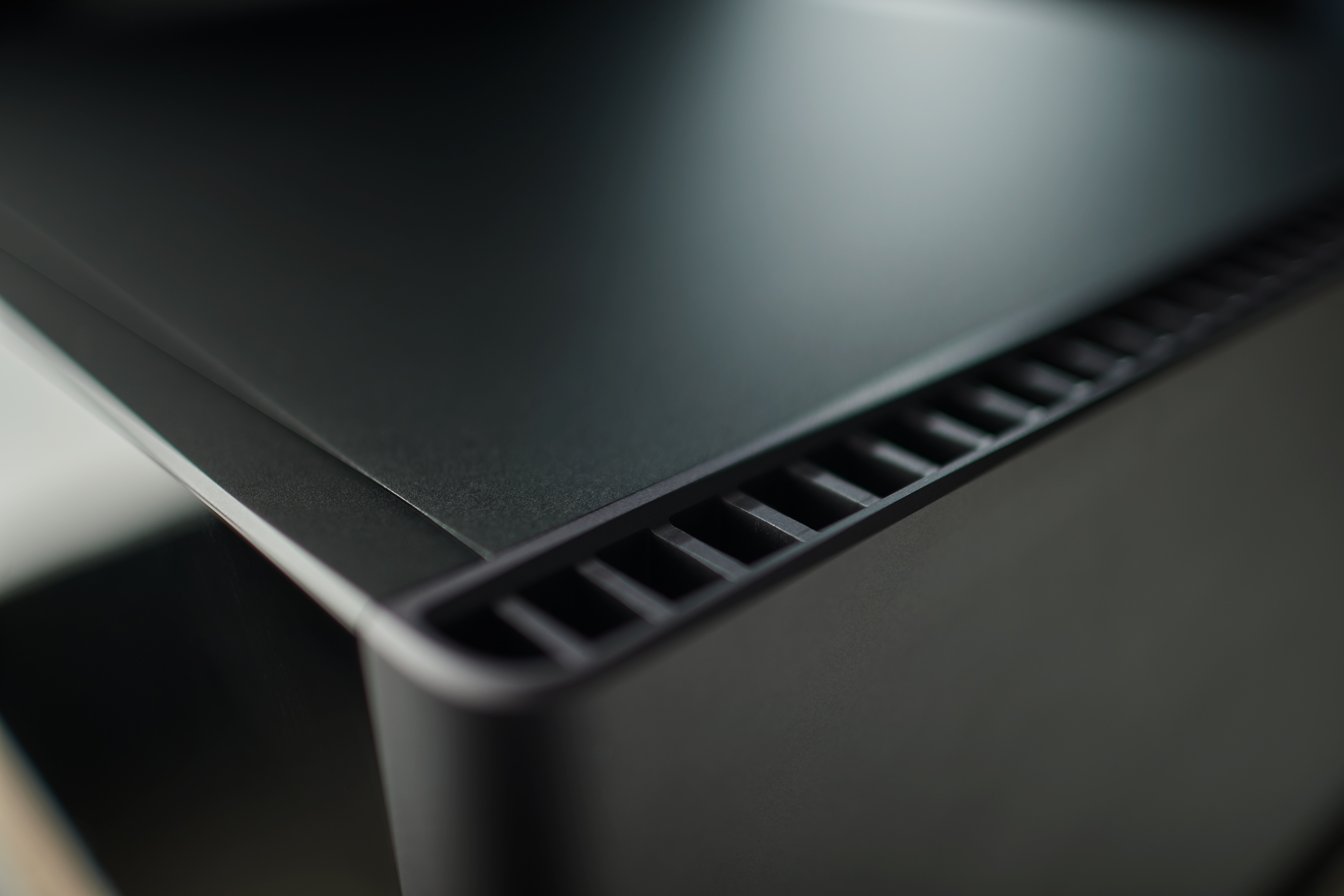
Final verdict
You need to see the Michi P5 and S5 in the flesh to see how superbly they’re built. Words can’t really begin to describe that. But you also need to hear for yourself how music that’s played through them sounds, because words can’t even begin to describe that… though if you started off by saying “totally and completely natural”, you’d be off to a very good start.
This Michi P5/S5 combo gets it right. Really nails it, in fact. If you want good looks, insanely high power output, low noise, superb performance and, most importantly, great sound, you’ve arrived at your destination.
Laboratory test report
Before going into detail about the results of Newport Test Labs’ test results, it’s extremely important to note that for the purposes of this test, Australian Hi-Fi specified that all tests had to be conducted with both the Michi S5 and Michi P5 in the ‘test loop’. Therefore there are very few results that can be compared with Michi’s own specifications, which are gained by testing the components individually, or indeed against the results from any other audio test laboratory that has not tested the two amplifiers as a ‘combo’.
It means that, in effect, we’re reporting ‘worst case’ results because for results such as distortion, the inherent distortion of the Michi S5 are here added to that of the Michi P5, which obviously does not occur if the components are tested individually.
One of the few outcomes that would not change is power output, of course, and Newport Test Labs measured the power output of the Michi S5 at 612-watts per channel (27.8dBw), both channels driven into 8Ω, when it was delivering a 1kHz test signal. It was also able to deliver this exact same power when delivering a 20Hz test signal.
However, when Newport Test Labs used a 20kHz signal to test power output, the Michi P5’s protection circuitry kicked in when the output voltage reached 45 volts RMS, which is around 253-watts (24.0dBW) into 8Ω, and around 506-watts (27.0dBW) into 4Ω. The fact that the protection circuit kicked in was not a surprise in itself, because 20kHz is a very high frequency to use for testing power output, and the power spectrum of music is such the Michi P5’s rated output power (500-watts into 8Ω) would never be required at this frequency.
But because the protection kicked in a little earlier than we expected, we checked with Michi, which told us: “The S5 has been engineered and tested for continuous power output of 20Hz–20kHz but as you noticed we have protection circuitry to monitor what is considered abnormal operating conditions including short circuit, d.c. voltage on the outputs and over-current. As normal operations would not typically have a signal of this type (frequency/power) we do shut down the unit into protection at high power outputs at high frequency. We found it best practice to monitor and use an abundance of caution with the power output generated by the S5.”
When Newport Test Labs tested the power output of the Michi S5 into 4Ω loads, the same protection circuitry kicked in with 20kHz test signals, but the Michi S5 easily delivered 1052-watts (30.2dBW) per channel with 1kHz test signals, both channels driven into 4Ω and 1,024-watts (30.1dBW) per channel with 20Hz test signals (both channels driven into 4Ω). These independent laboratory test results at 1kHz and 20Hz show power output levels that are well above Michi’s power output specification for both loads.
It should also be noted that if Newport Test Labs had tested dynamic (short-term) power output, the Michi S5 would have delivered its rated power output, because the test signal used for this purpose is so short-term that it would not have triggered the protection circuitry, but the Australian amplifier power measurement standard specifies that the power output of high fidelity audio amplifiers must be measured (and stated) on a continuous, rather than a dynamic basis.
Frequency response is one test that would certainly be impacted by measuring both the P5 and S5 as a combo, yet as you can see from the tabulated results, the Michi combo delivered superlative performance, with Newport Test Labs measuring a response of 5Hz to 480kHz –3dB. The Michi combo’s frequency response across the audio band, which is shown in Graph 7, was measured as 20Hz to 20kHz ±0.18dB, which is self-evidently an excellent result.
The frequency response measured when the Michi S5 was driving a test load that simulates the load that would be presented to it by a typical hi-fi loudspeaker system is shown by the black trace on Graph 7, below.
You can see that it tracks the response gained with a non-inductive load almost perfectly, which shows that the Michi S5 will sound the same no matter what speakers you connect to it, and will also be able to perfectly control the back-emf from speakers that have large bass drivers. Although the Michi S5’s damping factor was more than will be required by any speaker system, it’s not overly high, with Newport Test Labs reporting it as DF61, on the back of an output impedance (at 1kHz) of 0.13Ω.
Channel separation was outstanding at low and midrange frequencies, as shown in the tabulated results, with the Michi combination returning test results of 105dB at 20Hz and 98dB at 1kHz. The 72dB result at 20kHz is excellent, and more than will ever be required in order to deliver perfect stereo imaging and separation, but a little short of what I might have expected.
However, this could easily have been influenced by where the amplifiers were placed on the test bench relative to each other, as well as by the interconnects connecting the two, so even-better results might be achieved under different conditions. The same could be said for the inter-channel phase results, even though these, too, are really excellent results.
Channel balance was amazingly good. Taken merely on its value of 0.019dB, no-one would ever have guessed this would be the result of testing a pre/power combination; It’s more like you’d get by testing a state-of-the-art stereo power amplifier on its own. This is a superb achievement by the engineers responsible for designing the Michis.
Newport Test Labs measured the A-weighted signal-to-noise ratio of the Michi P5/S5 combination as 76dB referenced to an output of 1-watt, and 103dB referenced to rated output. The 103dB result is excellent, but further suggests that the result at 1-watt, although good, could be further improved by careful component placement and interconnect routing.
Graph 1 shows the total harmonic distortion measured by Newport Test Labs when the Michi combo was delivering 1-watt into an 8Ω load. You can see there’s a second harmonic component at –95dB (0.00177%) and a fourth harmonic at –110dB (0.00031%) and that’s it: otherwise the noise floor above the fundamental is perfectly clean, and also sitting right down at –115dB (referred to one-watt). This is an excellent result, as both harmonics are harmonically related to the fundamental, which will ensure good sound.
Graph 2 shows the total harmonic distortion measured by Newport Test Labs when the Michi combo was delivering 1-watt into a 4Ω load. You can see the second harmonic component has increased slightly, to –88dB (0.00398%), and the fourth to –112dB (0.00025%) plus a third harmonic has appeared at –108dB (0.00039%) and a fifth at –113dB (0.00022%). Once again, this is excellent performance.
Graph 3 shows the total harmonic distortion measured by Newport Test Labs when the Michi combo was delivering 20-watts into an 8Ω load. As you’d have expected given the increase in power output, additional distortion components have been introduced, but the essential structure of the lower-order components is maintained, with the second harmonic component at –93dB (0.00223%), the third at –110dB (0.00031%), the fourth at –112dB (0.00025%) and the fifth at –115dB (0.00017%).
The difference in the visual appearance of the graph is due to the noise floor of the amplifier having dropped down to around –130dB, which speaks for itself.
You can see that the noise that contributed to the overall result mentioned previously and tabulated in the results is low-frequency in nature, as evidenced by the spikes at the extreme left of the graph.
Graph 4 shows the total harmonic distortion measured by Newport Test Labs when the Michi combo was delivering 20-watts into a 4Ω load.
Essentially the distortion components are the same as when driving an 8Ω load, but interestingly, there’s a slight increase in the noise floor. This, together with the one-watt results, would seem to suggest you should prefer 6Ω or 8Ω designs when choosing loudspeakers to partner with the Michis.
CCIF-IMD distortion (19kHz and 20kHz test signals at equal levels) into an 8Ω load is shown in Graph 5. As you can see, there’s nothing to be seen at all. Sensational performance! Not only are there not any of the side-bands around the high-frequency test signals I normally expect to see, there’s also no sign at all of a regenerated difference signal down at 1kHz.
When Newport Test Labs used the same CCIF-IMD test signal, but increased the power output to 20-watts (Graph 6, above), both the side bands and the regenerated signal were introduced into the output, but at very low levels: around –90dB (0.00316%) for the two primary side bands at 18kHz and 21kHz, and at around –105dB (0.00056%) for the regenerated signal. Once again, these are all outstandingly good results.
The tone control action of the Michi P5 is shown in Graph 8. You can see the bass control delivers around 11dB of boost that is nicely shelved at 20Hz, then rolls off below this, which is excellent design. It delivers rather more cut: around 17dB. This same graph also shows the action of the treble control, and you can see it offers 9dB of boost that shelves nicely at 20kHz. Again, this is excellent design.
As with the bass control, the treble control offers rather less high-frequency attenuation, but still a more-than-adequate 13dB at 20kHz. If you attenuate both bass and treble you will also reduce the overall volume slightly across the midrange, but this is of no import, as it could be easily corrected by increasing the volume slightly.
The Michi combo’s distortion at the S5’s rated power output (500-watts per channel into 8Ω) is shown in Graph 9. Once again, Michi’s engineers have excelled themselves, with distortion completely under control, such that the second-order component is at 93dB (0.00223%), all the even-order components are more than 100dB (0.001% down, and all the odd-order components are more than 120dB down (0.0001%).
All these distortion components are too low in level to be audible, but even if they were, even-order distortion is pleasing to the ear, so it wouldn’t be an issue. Note on this graph that the noise floor right across the audio spectrum is now down at –140dB, and even the low-frequency noise at the left of the graph, which is higher in level, is still more than 110dB down. Once again, excellent performance.
Square wave testing using a 100Hz square wave revealed what the frequency response already showed, with the tilt on the waveform indicating the Michi combo’s frequency response rolls off at low frequencies and does not extend to d.c. The slight curvature in the tilt also shows a tiny amount of group delay.
The overshoot on the leading edge shows that there is a rise in the Michi’s frequency response at an ultrasonic frequency. Further investigation into this by Newport Test Labs revealed that the rise was 3dB, and that the frequency of the peak was at 302kHz. This is interesting, and obviously measurable, but will have zero affect on the amplifier’s sound quality.
The 1kHz square wave shows the same h.f. overshoot, and some slight tilt on the horizontals, so it’s not a perfect result, but it’s so close to perfect as really doesn’t matter.
The 10kHz square wave’s horizontals are on the other hand, perfectly flat, and the rise-time is super-quick, so if it were not for the overshoot caused by the high-frequency rise to 302kHz, it would be a perfect result.
Newport Test Labs determines amplifier stability by placing a 2µF capacitor in parallel with an 8Ω load and driving the amplifier into this load using a 1kHz square wave as the test signal. As you can see from the oscillogram, the Michi was beautifully behaved, with just a quarter wave height overshoot that was completely damped within three cycles, so I can say that the S5 will be completely stable into even the most highly reactive loudspeakers.
When both units are in standby mode, they will still draw 2.41-watts from your mains power supply, which is rather higher than the Australian Government’s mandate for standby power consumption, but low enough that it would have almost zero effect on your utility bill.
When you’re using this Michi combo to listen to very loud music, the two will pull somewhere around 200-watts from your power supply, which is surprisingly modest considering the S5’s power rating. Combined power factor was measured at +0.627.
Overall, Newport Test Labs measured outstandingly good performance from this high-powered, low-distortion pre/power combination.
Australian Hi-Fi is one of What Hi-Fi?’s sister titles from Down Under and Australia’s longest-running and most successful hi-fi magazines, having been in continuous publication since 1969. Now edited by What Hi-Fi?'s Becky Roberts, every issue is packed with authoritative reviews of hi-fi equipment ranging from portables to state-of-the-art audiophile systems (and everything in between), information on new product launches, and ‘how-to’ articles to help you get the best quality sound for your home.
Click here for more information about Australian Hi-Fi, including links to buy individual digital editions and details on how best to subscribe.
